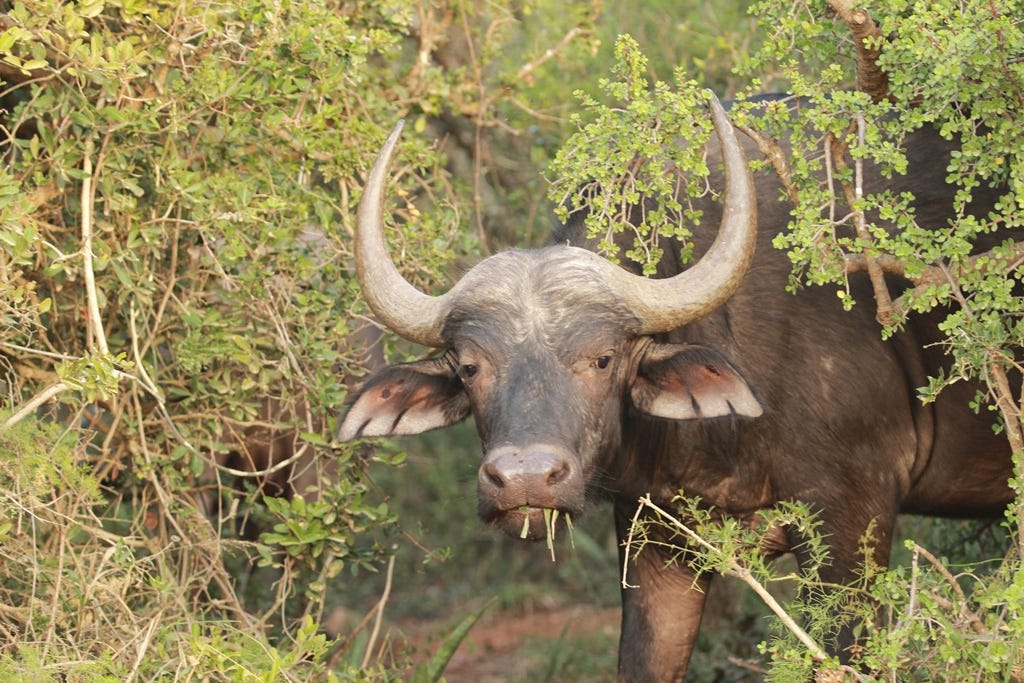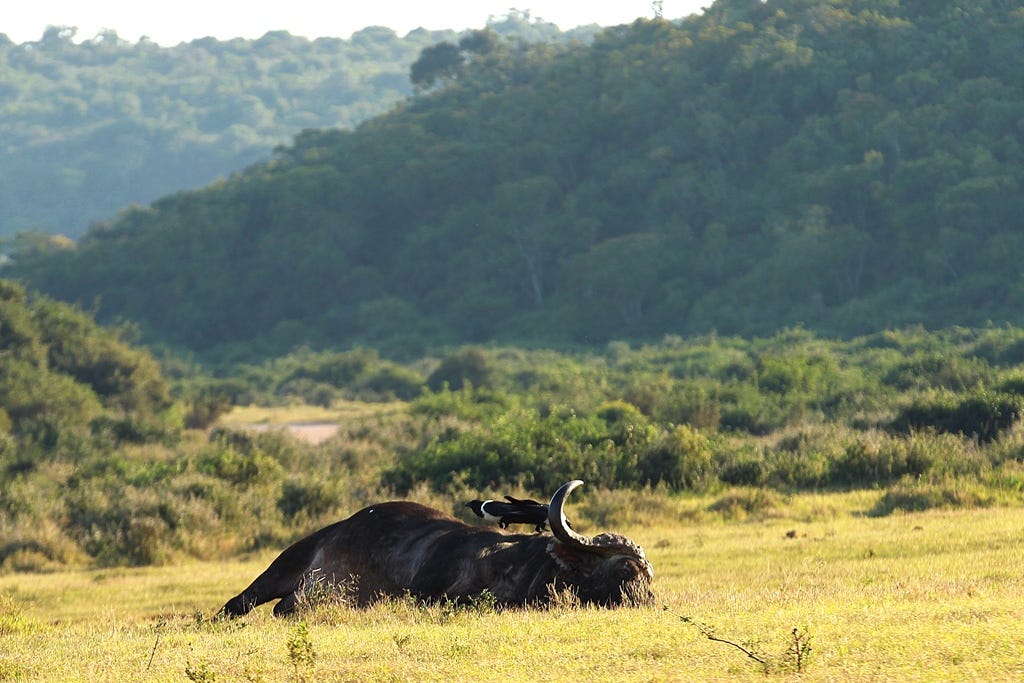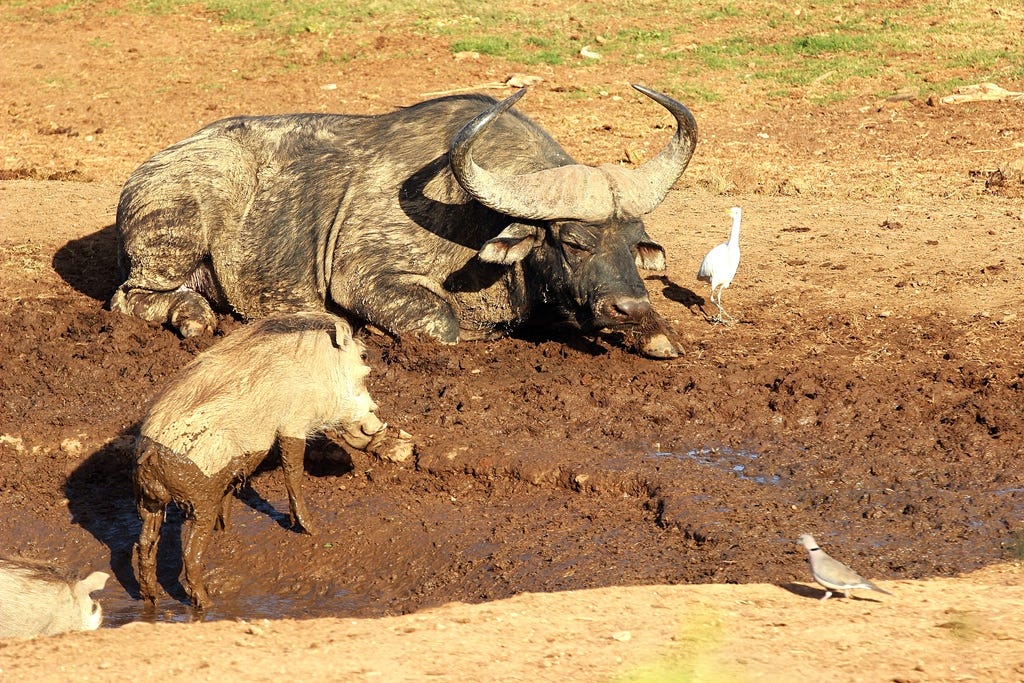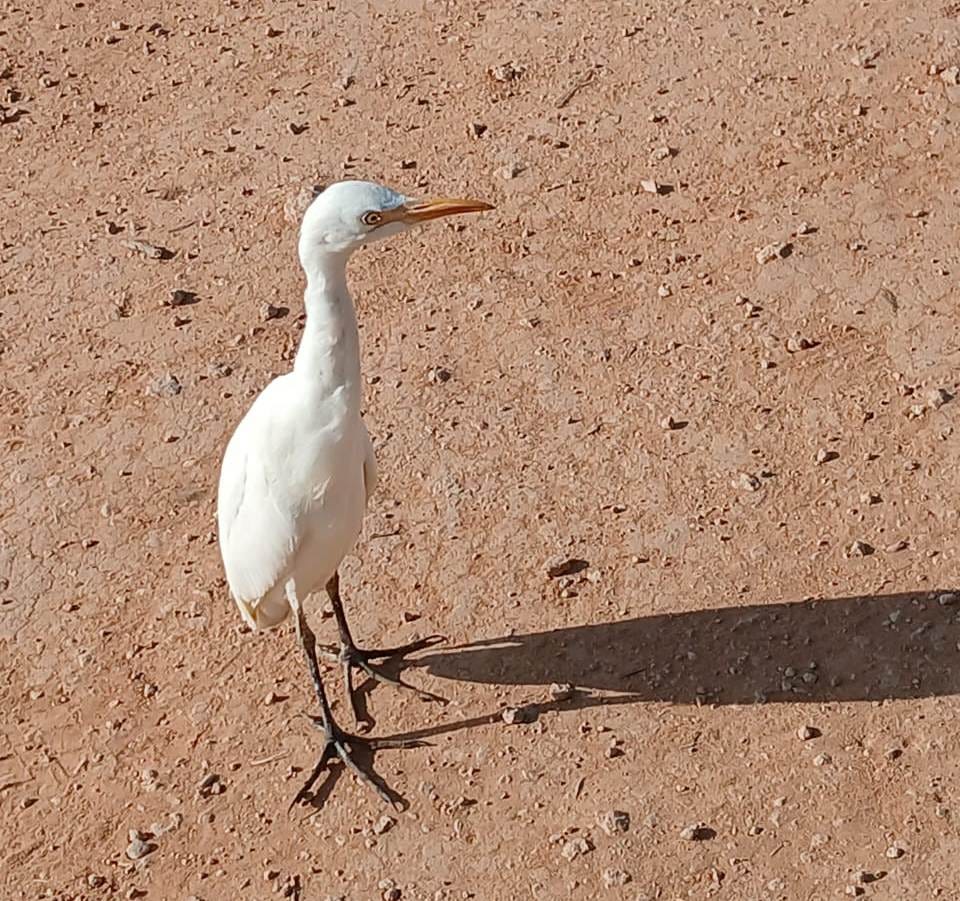
The first sighting on a visit to a game reserve is greatly anticipated. It sets the tone for the day. Is it going to be an exciting trip with lots of sightings or are we going to have an exercise perseverance?
As Ilza and I almost always enter the Addo Elephant Park (AEP) through the Matyholweni gate where vegetation is quite thick, the first sighting is usually: kudu, warthog and sometimes elephants.
Timing also affects the game-viewing mood. Do we see the first animal only after driving for half-an-hour, or is there an elephant hanging around right at the gate?
The first animal we spotted last Saturday certainly set the scene for our visit of unusual sightings. We had driven around three kilometres from the gate when a caracal dashed across the road ahead. We had only two brief caracal sightings in the last 16 years and both of them were far from the Matyholweni gate.
I could not get any photos, not even a blurry one so, dear reader, you will have to take my word on this. It was far too quick and I was driving the car (slowly). There was no time to grab my camera, but I did see where he entered the thick bush.
As we got closer there was an enormous racket of alarm calls from dozens of vervet monkeys perched high on thorn trees on the side of the road. They were all fixated on the exact spot among the bushes where we saw the caracal disappear. It sounded like they were having a nervous breakdown.
When the caracal darted away it was clear that his monkey hunt had been unsuccessful. Probably he had tried his luck in surprising an isolated individual, but was spotted by a vigilant member of the troop. I am guessing that the caracal had no chance against more than 20 monkeys and wisely scurried off into the undergrowth.
The next sighting was not nearly as exciting, but a small breeding herd of buffalo was almost on the ‘unusual’ spectrum. In our last three visits to the AEP we had not seen even a single buffalo. On that day we came across a small breeding herd and five other single buffalo bulls in very different locations around the park.

One bull near Lismore waterhole lay on his side (which is unusual) while a pair of crows appeared to be picking at his skin. We thought he might be about to join the big herd in the sky, but it was not to be because about four hours later we came by the same spot and there he was blithely grazing on the veld.
It began at Marion Baree . . .
The strangest sequence of events of the day began at Marion Baree waterhole. We normally expect to see elephants and warthogs at that muddy little pool. This time there was a single buffalo taking some sun while pigeons fluttered up and down and warthogs scuttled to the water’s edge for a quick drink. It was an idyllic warm winter’s afternoon.

Then suddenly a pale chanting goshawk (PCG) streaked through the air out of nowhere and hit a pigeon in mid-flight. It was astoundingly fast. There were feathers everywhere. My brain took a few long moments to process what my eyes had just seen. It was so unexpected.
Somehow, the pigeon survived the PCG dive-bomber. It lost a spray of feathers but succeeded in reaching safety among the branches in a nearby tree.
The PCG grumpily found a perch at the top of another tree – if raptors can look grumpy, that is. He had missed lunch and flew away into the sky to prepare a new menu.
As we were recovering our breath, I noticed a single egret seemed to be paying a lot of attention to us. At first he was standing next to my door, about a metre from my car. Then he walked around the front.

A bird fascinated by our car was not in itself unusual. Often when we stopped at waterholes, various bird species would come and pick dead insects off the grille or tyres. I had never seen an egret do that. In this case, the white bird did not attempt to pick out any tasty morsels. It seemed to be interested in the occupants of my car – that is my wife and I.
He came back to look at me. Then he went around the front to the other side to watch Ilza. He turned his head and stared right at you. It could have been intimidating if he hadn’t been only knee-high, but he stared.
I decided to move on very slowly and observed the egret walking alongside the car. He kept the same speed, so I stopped. And he stopped, and stared right into my eyes. Then I went ahead, a little faster and the egret half ran and half flew. Just to check if he was really following us, I changed speed several times, speeding up a little, slowing down and stopping. He kept up with us effortlessly.
At this point, I must stress that the egret was not a baby. I am definitely not an expert on egrets, but there were many other egrets at the water hole and he was just as big as any of the others. He could fly perfectly well and it is reasonable to assume that he was self-sufficient and did not need a maternal looking Renault to care for him.
Through all the stopping, starting and speeding up he kept pace easily. At one point, we saw two other vehicles approaching so I stopped. I did not want my wingman to fly into oncoming traffic.
The drivers of the two cars were laughing hysterically. One said he had never seen a pet egret before.
Eventually, after we had travelled about three kilometres from Marion Baree, I tested the speed limit within the park and managed to pull away from our newly found adoption.
It was certainly a new twist on the old, “Mom, can we keep him? He followed me home”.
The unusual sightings and many of the usual ones of elephants playing the mud; zebras rolling in the dust; and hartebeest giving you the beady eye, all made for a great day.
No we did not see a single lion but we have heard several interesting stories about a pair of male lions, known as the Kij Kij brothers being transported from the Kgalagadi Park to Addo.







Hi Steve, forgive your mother's ignorance - but what is a caracal? I liked the photograph of the
Buffalo bull in the trees - the detail was wonderful. Entertaining story about the Egret - would
have been quite scary if he was of the cat family !!
I enjoy your chatty post about the animals you see.
I wonder why that egret adopted you.